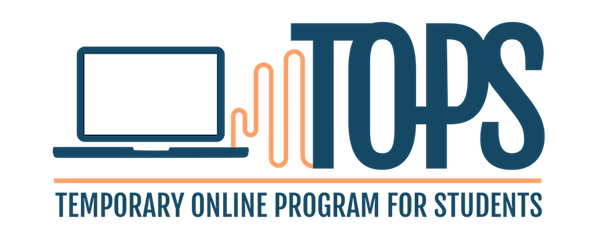Temporary Online Program for Students (TOPS) Updates Board of Education on Successes
Temporary Online Program for Students (TOPS) Updates Board of Education on Successes

What is TOPS?
Collaboration, grit, resilience, community, support, interaction, and connection are words that popped up throughout a presentation to the Board of Education by students and staff from LPS’s Temporary Online Program for Students (TOPS). These words seem to capture the essence of TOPS; it’s clearly more than just an online program. Nathan Frasier, coordinator of alternative learning, said, “TOPS staff continues to work tirelessly to find creative ways to connect with students remotely and provide a dynamic learning experience.”
TOPS is an online school of approximately 1,500 students and 60 staff. The program was built over the course of about two months and uses various online platforms for instruction. The presentation to the Board of Education included information about what a “day in the life of a student” looks like, what sorts of engagement strategies teachers are using to facilitate student learning, and what some of the successes have been so far this year.
What does a typical day look like?
A typical day for a TOPS student is anything but typical. It involves synchronous (online together) learning; asynchronous learning (online at the student’s discretion); small, targeted group instruction; lunch bunches; online clubs; and virtual home visits. Erin Burns, a TOPS middle school language arts teacher, said, “We are proud we’ve been able to make connections and build relationships with students even though we’ve never met them face to face.” Indeed, it seems that every decision that’s made, every plan that’s executed, every collaborative meeting between teaching colleagues is geared towards making the learning experience the best it can possibly be for students. “At the heart of every single effort we are making is a desire to provide space for students to connect and learn,” said Ms. Burns.
“Students are working incredibly hard at TOPS, which is made possible by the diligent support of their families,” said Ashley Nelson, a TOPS first grade teacher.
Community is important
Another theme running throughout the presentation TOPS gave to the Board was community. Teachers expressed that they have never worked in an environment that has been this collaborative, not only between themselves, but families are more engaged. Parents are taking part in their child’s education daily. The communication between school and home is stronger than ever in this school.
Teachers are also utilizing strategies for creating a sense of community in classes that are far larger than they would be in a brick-and-mortar school. There are social-emotional learning opportunities such as lunch bunches, social clubs, pen pals, coding clubs, and weekly live read alouds at the elementary level. At the secondary level, students are using the chat function in their Google Meets; they are interacting with visual check-ins, such as thumbs up or down, on understanding the content; there are live games, discussions, polling, opportunities for peer-to-peer interaction and breakout groups; and teachers are checking in with parents and families to keep students on track. High school advisory groups exchange tips and tricks on time management, self-care, mental health support, and they share a variety of resources to help each other succeed.
Successes are made possible by dedicated teachers and paras
Teachers admit that this year is a challenging one. It takes more planning, and some have sacrificed a work/life balance in order to make the TOPS experience a great one for students. “Teachers are working incredibly hard to manage multiple preps and create enriching learning experiences. We are fielding a lot of the same student needs that would be seen in a brick-and-mortar school, and we’re doing so with a larger student caseload,” said Kelsey Dondelinger, who teaches TOPS middle school math. TOPS staff are passionate, driven, and dedicated to the students. Jennifer James, a TOPS elementary special education teacher, said, “We meet students where they are instructionally regardless of their learning circumstances, their technology know-how, or even the supplies they have at home.” She said this means sometimes teachers are dropping supplies off at a student’s house periodically.
Yantze Zastrow, a TOPS Spanish teacher, wrapped up the presentation to the Board: “I want to thank you for seeing us and for seeing our scholars, because they are amazing, amazing kids...Even though we are not in our brick-and-mortar schools, we have not been forgotten.”
